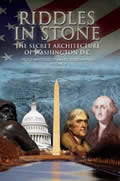PART 10
By
Timothy N. Baldwin, JD.
February 24, 2010
NewsWithViews.com
Anti-Secessionist Argument: The US Constitution Does Not Grant the State’s The Right to Secede Individually, and even if it were admitted that secession is a right, it may only be accomplished with the permission of at least three fourths of the states.
Political Status as Independent, Sovereign States
After having read all of the information in the previous articles I presented, some may still attempt to deny the states their right to secede by arguing that the states never had the right to secede even before the ratification of the US Constitution. They must argue this position because if it were shown that the states waived this power before ratifying the US Constitution, then the tenth amendment would prove worthless regarding their right to secede. Such an argument is crafty, but lacks any support in history, facts or law, for it has been universally accepted that:
“[I]f any disputes arise in a state respecting the fundamental laws…it belongs to the nation alone to judge and determine them conformably to its political constitution…Every true sovereignty is, in its own nature, unalienable…[Transferring sovereignty] to other hands…can never take place without express and unanimous consent of the citizens…for the individuals who have formed this society, entered into it in order to live in an independent state, and not under a foreign yoke.” Emer De Vattel, The Law of Nations, (Indianapolis, IN, Liberty Fund, [1758] 2008), 96, 123.
Given this fact, some will try to avoid the state’s sovereignty altogether by arguing that the colonies never enjoyed independent status from each other upon their Declaration of Independence, as if they formed one body-politic, despite the fact that even Justice Joseph Story (one of the most ardent unionists) admits that the Declaration of Independent did not form one body-politic and despite all logical arguments and facts to the contrary. Moreover, this argument has already been addressed in my previous articles and has been proven to be completely in error.
The states were independent, sovereign and free and had the power to enter into compacts with each other, as they did under the Articles of Confederation and the US Constitution.
Moving on from that argument, some will attempt to use the Articles of Confederation’s perpetual duration as “proof” that the states waived all rights to secede from the union from then on. However, this presupposition holds no truth but contains only serious flaws, and a study of American history will show that even those most outspoken unionists did not believe this position to be true. Consider first principles.
First, the states possessed all powers of independent nations as described in the Declaration of Independence. After having separated from Great Britain, each state declared that all political associations had been dissolved among themselves and with Great Britain. Only a truly biased person would deny the sovereignty of the states at that point. Concerning the status of the states and their powers relative to the other states and the rest of the world, the Declaration of Independence declares, unequivocally:
“[A]ll political connection between them and the state of Great Britain, is and ought to be totally dissolved; and that as free and independent states, they have full power to levy war, conclude peace, contract alliances, establish commerce, and to do all other acts and things which independent states may of right do.” (emphasis added)
Again, misconstruing the most fundamental document to the states’ existence reveals the most utter prejudice towards a national form of government and an elimination of the states. As a side, notice that nation of Great Britain was called a “state” as well, putting the status of that long-standing nation with the new nations, also called “states” (in plural form).
The following federal supreme court justices and American jurists recognized the independent sovereign status of the states after the Declaration of Independence, having the power “to do all other acts and things which independent states may of right do”:
US S CT Justice Nathan Clifford: “Counties and other municipal corporations were created by the States; but the States were not created by the United States, as the States existed as independent sovereignties before even the Union was formed.” John Brown Dillon, Historical Evidence on the Origin and Nature of the Government of the United States, (New York, NY, SW Green, 1871), 28.
Professor George Sharswood: “The Declaration of Independence was the joint and several (separate) act of the Colonies, and its effect was to constitute each separate colony a free and independent State.” Ibid., 27.
US S CT Justice Samuel Chase: “Under the Articles of Confederation each State retained its sovereignty, freedom, and independence, and every power, jurisdiction, and right, not expressly delegated to the United States.” Ibid., 28.
US S CT Justice John Catron: “Before the new Constitution was adopted, she (Virginia) had as much right to treat and agree as any European government had.” Ibid., 26.
Given the status of these states as independent and free states, they necessarily had the power to do what independent bodies-politic have: the power to make (accede to) and unmake (secede from) constitutions. If these states did not possess this ultimate demonstration of sovereignty, then they most certainly did not have the power to accede to the Articles of Confederation and the US Constitution. Yet, they did so, and it has never been doubted that the states had the sovereign power to accede to such a union, proving once again each individual states’ sovereignty.
Second, under the Articles of Confederation, the states retained all powers not expressly delegated to the federal government, and it is clear that they did not delegate the power to secede, which all sovereigns have. Its “perpetual” duration had nothing to do with the right and power to secede. By virtue of the US Constitution being drafted, proposed and ratified, those states that assented to the US Constitution seceded from the old union under the Articles of Confederation, despite its duration being perpetual.
They clearly demonstrated what sovereigns have a right to do: make and unmake constitutions. This is very similar to the laws regarding incorporation of a fictitious entity within a state. If one forms a corporation, the incorporation’s by-laws will state the duration, which in most cases, will be “perpetual;” but that most certainly does not mean the corporation cannot be dissolved--likewise with the “perpetual” duration of a union.
Moreover, the accession to the US Constitution proves that the states did not intend to keep all of the states eternally bound to the then-existing union, because they only required nine of the thirteen states to ratify the constitution. More than assenting to the new union under the constitution, these nine states were in truth seceding from the old union under the Articles. All of this is proven by the fact that the Articles of Confederation could not be amended except through the unanimous consent of all the states:
“[T]he Articles of this Confederation shall be inviolably observed by every State, and the Union shall be perpetual; nor shall any alteration at any time hereafter be made in any of them; unless such alteration be agreed to in a Congress of the United States, and be afterwards confirmed by the legislatures of every State.” Article 12 (emphasis added)
The states clearly did not intend for the amendment clause in the Articles to substitute for a waiver or condition on the right to secede, yet unionists today attempt to substitute the amendment clause in the US Constitution as a waiver or condition of the right to secede. This simply does not comport to proper rules of construction concerning our forefathers’ true intent. In other words, it cannot be validly construed that the states waived the right to secede through the three-fourth requirement in the amendment clause of either the Articles or the Constitution, when the Articles was completely abandoned (seceded) by only nine of those thirteen states--without the consent of all the states--even though the Article’s amendment clause required consent of all the states (in addition to the Articles of Confederation declaring itself to be perpetual).
In fact, each state ratified the US Constitution at different times, over a three year period (1787-1790). So, during three years, some states never acceded to the new union (US Constitution), and some states had already seceded from the old union (Articles of Confederation), which could have been changed only through amendment by consent of all the states. Still, those seceding states from the Articles treated those dissenting states of the Constitution as independent and sovereign states under the Law of Nations, and vice-versa. There was no union as formed under the “perpetual” Articles of Confederation, and the amendment clause had nothing to do with seceding from the union under the Articles. This is just what James Madison observed would rightfully happen if some of the states did not secede from the Articles of Confederation and accede to the US Constitution:
“What relation is to subsist between the nine or more States ratifying the Constitution, and the remaining few who do not become parties to it?... In general, it may be observed, that although no political relation can subsist between the assenting and dissenting States, yet the moral relations will remain uncancelled. The claims of justice, both on one side and on the other, will be in force, and must be fulfilled; the rights of humanity must in all cases be duly and mutually respected; whilst considerations of a common interest, and, above all, the remembrance of the endearing scenes which are past, and the anticipation of a speedy triumph over the obstacles to reunion, will, it is hoped, not urge in vain moderation on one side, and prudence on the other.” FP 43 (emphasis added).
Madison notes that the states joining the union assented to the US Constitution (ergo, federal compact), and the remaining states dissented, and neither the two can meet: they were disjoined, despite the unanimous consent requirement of the Articles amendment clause and its perpetual duration. Moreover, how can these assenting and dissenting states act for themselves as individual states if each did not possess the power to make or unmake constitutions individually; if the US was one body-politic; or if the union was perpetual? How can Madison treat the dissenting states as independent and sovereign states outside of the union if these states did not possess all of the powers that independent nations possess? Did these dissenting states become sovereign states by virtue of what other states told them they were? Nonsense.
If the states in fact waived all rights to secede from the union under the Articles of Confederation, then the US Constitution is illegitimate and illegal, as not having a basis in the compact among the states to dissolve the previous compact. If the states entered into the Articles of Confederation with the expressed or implied understanding that their union would be perpetual unless all of the states consented otherwise, then nine out of thirteen states’ seceding from that union to join a new union would be just cause for a war, as Lincoln claims he was justified to force union upon the dissenting states. Alternatively, if the right to secede was waived by the “perpetual” duration and a unanimous amendment requirement, it most certainly was reclaimed and reinstituted by the US Constitution’s duration not being stated as “perpetual,” by the secession from the Articles of Confederation, and by the reservation of rights under the tenth amendment.
And if you want to scientifically apply political formulas relative to political action and freedom, then one might consider James Madison’s rules of construction concerning whether the US Constitution was even legitimately drafted in compliance with the state delegates’ limited authority to consider only amending the Articles of Confederation:
“There are two rules of construction, dictated by plain reason, as well as founded on legal axioms. The one is, that every part of the expression ought, if possible, to be allowed some meaning, and be made to conspire to some common end. The other is, that where the several parts cannot be made to coincide, the less important should give way to the more important part; the means should be sacrificed to the end, rather than the end to the means.” FP 40 (emphasis added).
To Madison, even if the US Constitution was not legitimately drafted by the delegates of the states at the constitutional convention (and thus ratified), the (greater) ends ought to give way to the (lesser) means where there is more than one interpretation to the matter. Well, if freedom is the greater end and union is the lesser means, should not freedom prevail over union? Should not an interpretation be given to whatever means protects freedom? If so, then this necessarily puts the question of freedom into the hands whose freedom is affected (self-government): that is, the body-politic of a state, for it cannot be reasonably argued that the people of New York have the right to tell the people of Idaho how freedom is best protected. Only the people of Idaho can make that decision for themselves.
| Subscribe to the NewsWithViews Daily News Alerts! |
However,
all of this being said, nothing of this sort (regarding the status of
the states as sovereigns possessing the powers that all independent states
possess under the Law of Nations) has ever been argued with any sort of
credibility or historical confirmation. The fact remains, the States possessed
the right to secede under the Articles of Confederation and they possess
it under the US Constitution. For part eleven click below.
Click here for part -----> 1,
2, 3, 4,
5, 6, 7,
8, 9, 10,
11, 12,
Go to www.libertydefenseleague.com for articles, speeches and interviews of Timothy Baldwin.
Related Article:
1- A Dissenting Opinion on "Secession"
� 2010 Timothy N. Baldwin, JD - All Rights Reserved
Sign Up For Free E-Mail Alerts
Timothy Baldwin is an attorney from Pensacola, FL, who received his bachelor of arts degree at the University of West Florida and who graduated from Cumberland School of Law at Samford University in Birmingham, AL. After having received his Juris Doctorate degree from Cumberland School of Law, Baldwin became a Felony Prosecutor in the 1st District of Florida. In 2006, he started his own law practice, where he created specialized legal services entirely for property management companies.
Like his father, Chuck Baldwin, Timothy Baldwin is an astute writer of cutting-edge political articles, which he posts on his website, www.libertydefenseleague.com. Baldwin is also the author of the soon-to-be-released book entitled, Freedom For A Change, in which Baldwin expounds the fundamental principles of freedom believed by America’s forefathers and gives inspiring and intelligent application of those principles to our current political and cultural standing.
Baldwin is involved in important state sovereignty movement issues, including being co-counsel in the federal litigation in Montana involving the Firearms Freedom Act, the likes of which is undoubtedly a pivotal and essential ingredient to restoring freedom and federalism in the states of America. Baldwin is also a member of freedom organizations, such as The Oath-Keepers, and believes that the times require all freedom-loving Americans to educate, invigorate and activate the principles of freedom within the States of America for ourselves and our posterity.
Web site: LibertyDefenseLeague
E-Mail: tim@libertydefenseleague.com
















